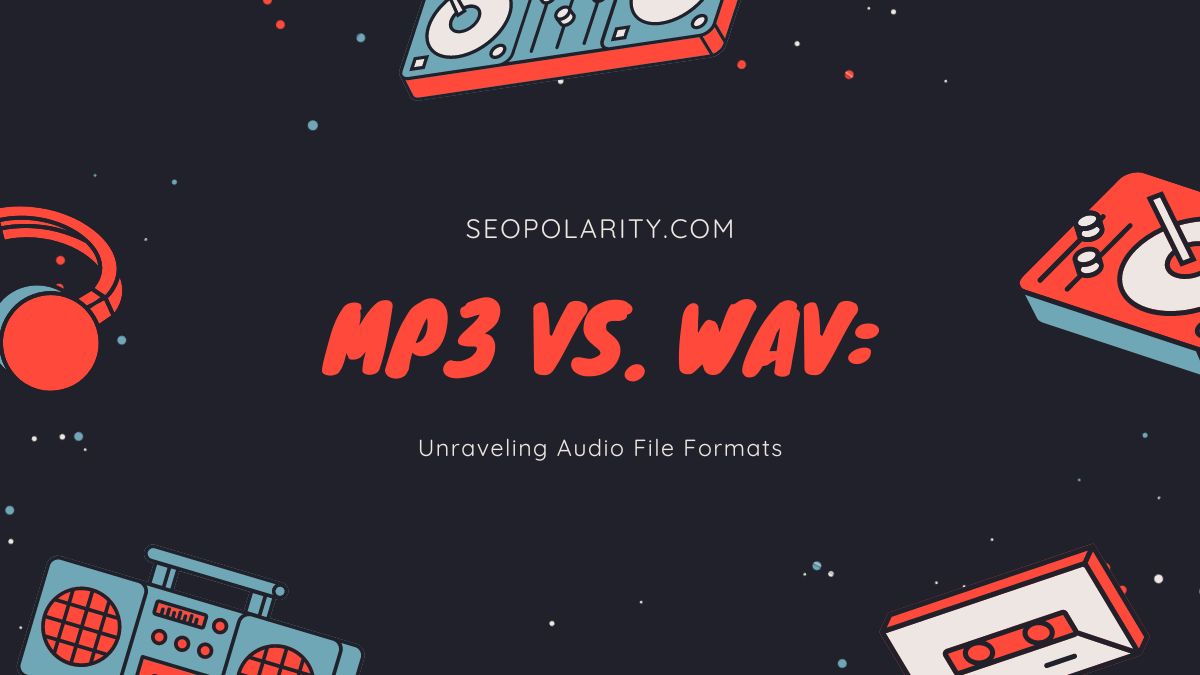
In the realm of digital audio, two prominent formats stand out: MP3 and WAV. Each has its own set of characteristics, advantages, and limitations. Understanding MP3 and WAV differences informs decisions on recording, storing, and distributing audio. In this blog post, we will examine the differences between the two formats. Additionally, we will explain their features and discuss the advantages and disadvantages of each.
MP3 Compressed Versatility
MP3 revolutionized audio consumption and distribution. The algorithm reduces file size significantly while maintaining high audio quality. The contraction removes minor repetitions and data redundancy. It operates at a smaller size than uncompressed formats.
Advantages of MP3:
- Compact File Size: Compact MP3 file sizes are much smaller than WAV files, making them ideal for storing and sharing audio online.
- Broad Compatibility: Broad comity MP3 is supported by biases and platforms. It includes smartphones, computers, media players, and streaming services.
- Streaming Efficiency: The small size of MP3 is ideal for streaming audio online. It allows for smoother playback and shorter buffering times.
- Customizable Bitrates: MP3 lets users adjust the bitrate while encoding. This offers flexibility in balancing file size and audio quality based on preferences.
Limitations of MP3:
- Lossy Compression: MP3 compression reduces audio quality compared to WAV. This loss of quality may concern audiophiles and professionals. It’s not noticeable to average listeners.
- Limited Dynamic Range: MP3’s compression may reduce audio’s dynamic range, impacting music details.
- Artifacting: The contraction process can introduce vestiges like ringing or pre-echo. This might impact audio quality, especially at lower bitrates.
WAV: Uncompressed Fidelity
WAV, short for Waveform Audio File Format, represents audio data in a raw, uncompressed format. Moreover, it preserves all the details of the original audio waveform. This makes it a top choice for professional audio products, learning, and archiving. Unlike MP3 files, WAV files do not compress, thus maintaining high audio quality. Furthermore, WAV files work better with larger data sizes.
Advantages of WAV:
- Uncompromised Audio Fidelity: WAV files preserve the original audio quality, making them perfect for critical listening.
- Wide Industry Adoption: WAV is a standard format in audio production. Moreover, it is compatible with various digital audio workstations, editing software, and equipment.
- Editing Flexibility: WAV allows flawless editing, processing, and manipulation of audio data. It maintains quality without further decline.
- High Resolution: WAV supports high-resolution audio formats. It accommodates slice rates and bit depths exceeding CD-quality audio capabilities.
Limitations of WAV:
- Large File Size: WAV files have no contraction, leading to larger sizes than MP3. MP3 uses less storage space and bandwidth.
- Limited Compatibility: Some platforms struggle with WAV files due to their size and uncompressed nature. This can cause compatibility issues during distribution and playback.
Conclusion
In the debate between MP3 and WAV, there is no bone-size-fits-all result. Moreover, each format serves a specific purpose for audio creators, consumers, and industry experts. MP3, being convenient, portable, and effective for storing music, is a popular choice for daily listening and online sharing. On the other hand, WAV prioritizes uncompromised audio dedication in professional audio products. Furthermore, WAV also values versatility in learning and archival operations. Understanding the differences between MP3 and WAV helps you make informed decisions. Consequently, this ensures optimal audio quality and availability. Choosing the right format affects how you listen to sound, and it matters for all music lovers.